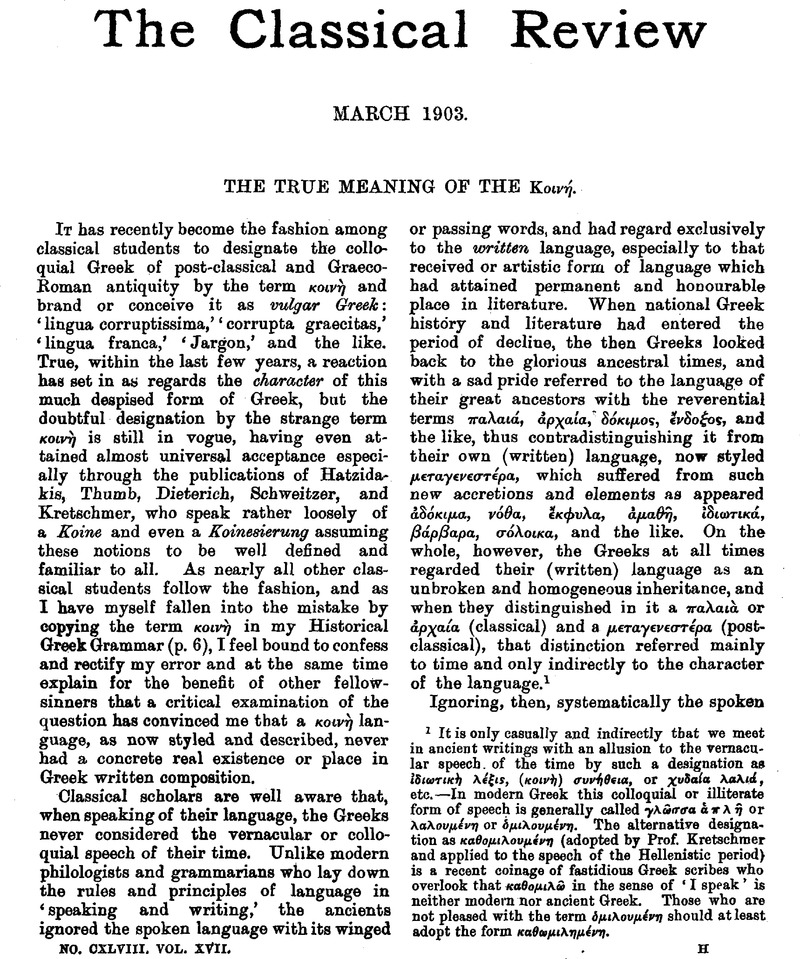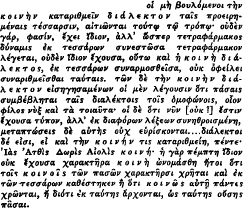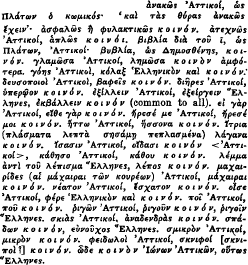Article contents
The True Meaning of the Κοινή
Published online by Cambridge University Press: 27 October 2009
Abstract

- Type
- Original Contributions
- Information
- Copyright
- Copyright © The Classical Association 1903
References
page 93 note 1 It is only casually and indirectly that we meet in ancient writings with an allusion to the vernacular speech, of the time by such a designation as ![]() or χμδαα λαλι etc.—In modern Greek this colloquial or illiterate form of speech is generally called γλσσα π λ or λαλομμη or δμιλνμμη. The alternative designation as καθομιλνμνη (adopted by Prof. Kretschmer and applied to the speech of the Hellenistic period) is a recent coinage of fastidious Greek scribes who overlook that καθομιλ in the sense of ‘I speak’ is neither modern nor ancient Greek. Those who are not pleased with the term δμιλινμμη should at least adopt the form καθωιλμμη.
or χμδαα λαλι etc.—In modern Greek this colloquial or illiterate form of speech is generally called γλσσα π λ or λαλομμη or δμιλνμμη. The alternative designation as καθομιλνμνη (adopted by Prof. Kretschmer and applied to the speech of the Hellenistic period) is a recent coinage of fastidious Greek scribes who overlook that καθομιλ in the sense of ‘I speak’ is neither modern nor ancient Greek. Those who are not pleased with the term δμιλινμμη should at least adopt the form καθωιλμμη.
page 94 note 1 Johannes Philoponos (in ed. Aldus Manutius' Thesaurus of 1496, fol. 286 f.,)  .
.
page 95 note 1 Compare also Moiris the Atticist who, writing in the interest of the purely Attic dialect, contradistinguishes from it as κοινν or panhellenic the stock common to all the dialects, including Attic, and as Ἑλληνικν or Hellenic the stock common to all the dialects except Attic. ![]() (common to all).
(common to all).  .
.
page 95 note 2 Compare Sext. 608, 17  .
.
- 2
- Cited by




